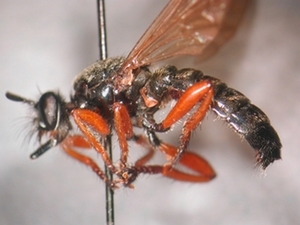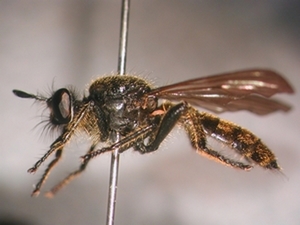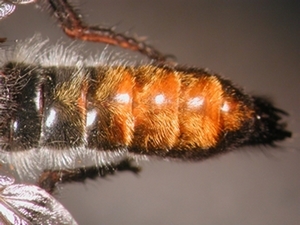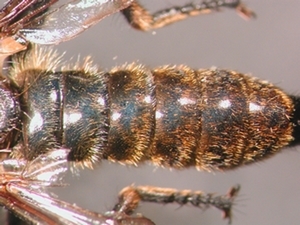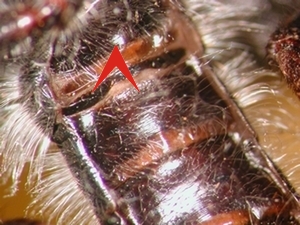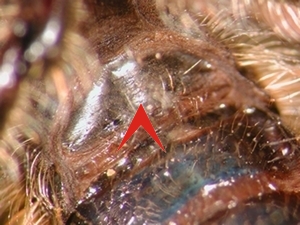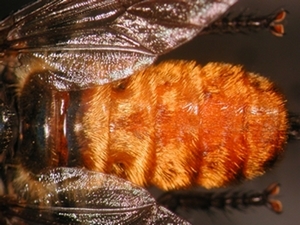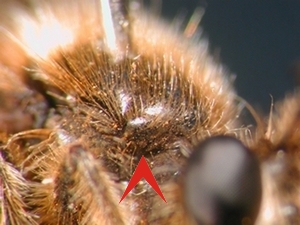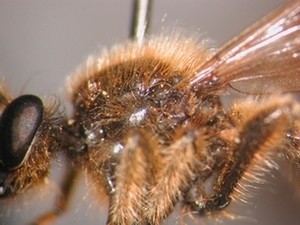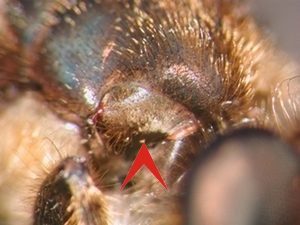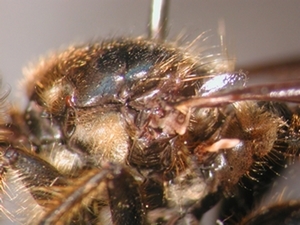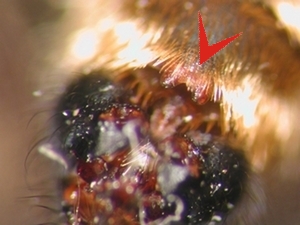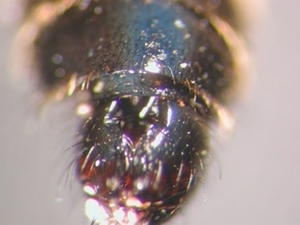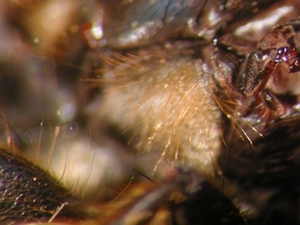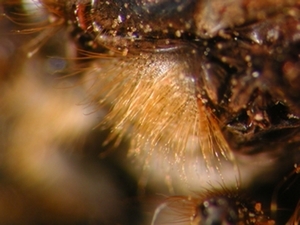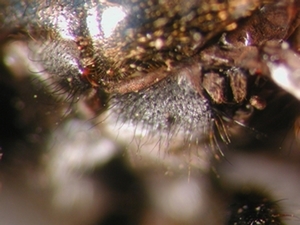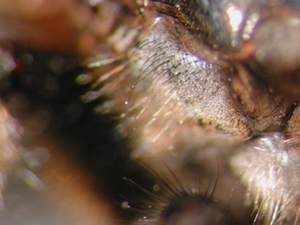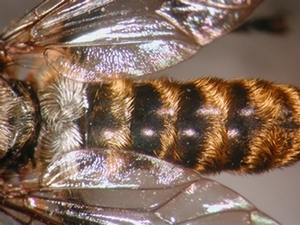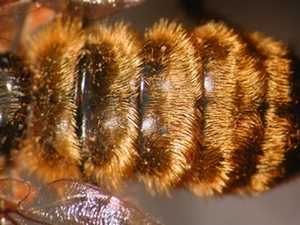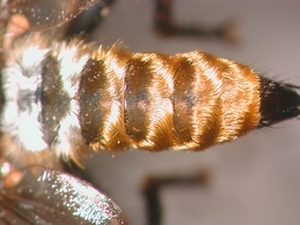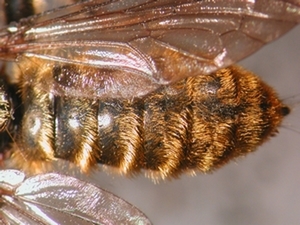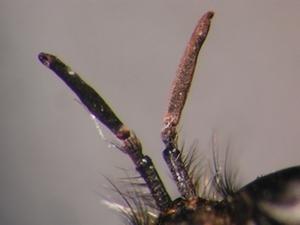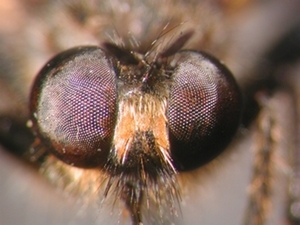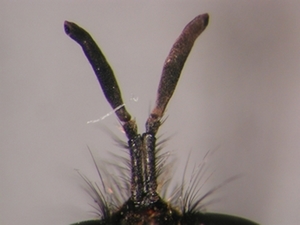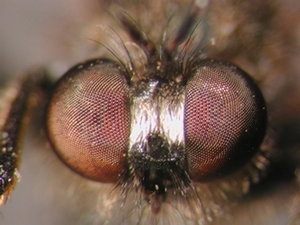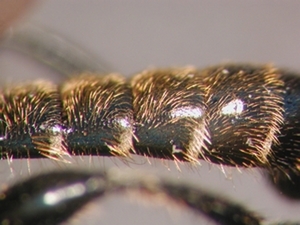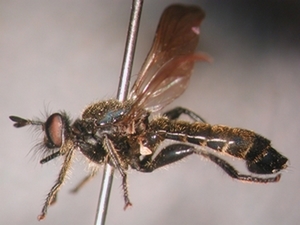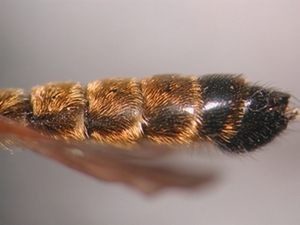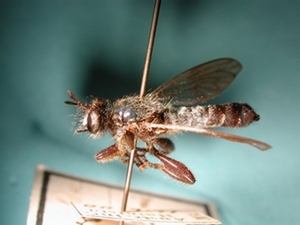g
Start g
- Robber flies of Germany -
[Key] Catalogue Comparisons Notes Terminology
key
- Subfamilies
- Laphriinae
Choerades
contents & layout
& copyright:
Fritz Geller-Grimm
Imprint
Presently, there are ten species recorded from Germany. The identification is difficult due to the variable characters that are generally used in identification keys. Because of the difficulty in describing the shape or arrangement of hairs the use of photographs for identification can be very helpful. Nevertheless, a taxonomic revision of this genus is needed and there will probably be changes in the taxonomic position of some species.
The publication of MOUCHA & HRADSKÝ (1955) is additionally incorporated in this identification key and Mr. Milan HradskÝ verified the identification of all specimens. MIKSCH et al. (1993) described a variation of C. marginata, which was identified by Mr. HradskÝ as C. marginata s. str.
Mr. Wolff provided some additional characters identifying C. ignea.
A table for comparison of taxa is provided on this CD-ROM.
| 1 a. |
Legs red, tarsomeres (tarsi) darker [Fig. 1]
. . . . . . . . . . . .
|
| 1 b. |
Legs entirely black [Fig. 2]
. . . . . . . . . . . .
|
| 2 a. |
Tergites partly red [Fig. 3]
. . . . . . . . . . . .
|
| 2 b. |
Tergites entirely black [Fig. 4]
. . . . . . . . . . . .
|
| 3 a. |
1st sternite shiny [Fig. 5]; scutellum usually with black scutellar marginal bristles; 2nd tergite usually black [Fig. 6]
. . . . . . . . . . . .
|
| 3 b. |
1st sternite brown tomentose (not shiny) [Fig. 7]; scutellum usually with yellow scutellar marginal bristles; 2nd tergite usually reddish [Fig. 8]
. . . . . . . . . . . .
|
| 4 a. |
Postpronotal lobe (humeral callus) and pleura (sides of thorax) only slightly tomentose [Fig. 9]; scutum with long, densely arranged hairs (bumble bee-like) [Fig. 10]
. . . . . . . . . . . .
|
| 4 b. |
Postpronotal lobe (humeral callus) and pleura (sides of thorax) distinctly tomentose [Fig. 11]; scutum with only few, 'normal' hairs [Fig. 12]
. . . . . . . . . . . .
|
| 5 a. |
Last tergite in males bifid posteriorly (two protuberances at hind margin above base of hypopygium) [Fig. 13] - females unknown to me
. . . . . . . . . . . .
|
| 5 b. |
Last tergite in males with straight, 'normal' hind margin [Fig. 14]
. . . . . . . . . . . .
|
| 6 a. |
Anepisternum (mesopleuron) yellow tomentose, with densely arranged long yellow hairs [Fig. 15], [Fig. 16]
. . . . . . . . . . . .
|
| 6 b. |
Anepisternum (mesopleuron) greyish-brown tomentose, with sparsely arranged yellow and black hairs [Fig. 17], [Fig. 18]
. . . . . . . . . . . .
|
| 7 a. |
Males: 1st tergite with white hairs, hind margins of remaining tergites with narrow stripe of yellow hairs (in dorsal view); scutum, on posterior margin just anterior to scutellum, with only few white hairs [Fig. 19]; females: tergites completely covered with long, yellow hairs so that coloration of tergites indeterminable [Fig. 20]
. . . . . . . . . . . .
|
| 7 b. |
Males: 1st and usually 2nd tergite with white hairs, hind margins of remaining tergites with broad stripe of yellow hairs (in dorsal view); scutum, on posterior margin just anterior to scutellum, with densely arranged white hairs [Fig. 21]; females: hairs on tergites short, coloration of tergites distinct in dorsal view [Fig. 22]
. . . . . . . . . . . .
[questionable species] |
| 8 a. | scape (1st antennal segment) 1.8 - 2.5 times as long as pedicel (2nd antennal segment) [Fig. 23]; males: face usually with yellow hairs above facial gibbosity [Fig. 23]; males: face usually with yellow hairs above facial gibbosity [Fig. 24]
. . . . . . . . . . . .
[= marginata var. sensu MIKSCH et al. (1993)] |
| 8 b. | scape (1st antennal segment) at least 3 times as long as pedicel (2nd antennal segment) [Fig. 25]; males: face usually with white hairs above facial gibbosity [Fig. 26]
. . . . . . . . . . . .
|
| 9 a. |
Males: tergites with only sparsely arranged hairs, coloration of tergites distinct in lateral view [Fig. 27]; males: white hairs on tergites 1 - 3 restricted to hind margins [Fig. 28]
. . . . . . . . . . . .
[= marginata sensu MIKSCH et al. (1993)] |
| 9 b. |
Males: tergites with densely arranged hairs, coloration of tergites not distinct in lateral view [Fig. 29]; males: tergites 1 - 3 usually covered with white hairs, sometimes restricted to hind margins [Fig. 30: type]; females unknown to me
. . . . . . . . . . . .
[questionable species] |
